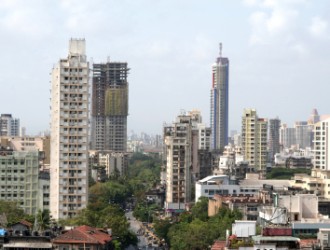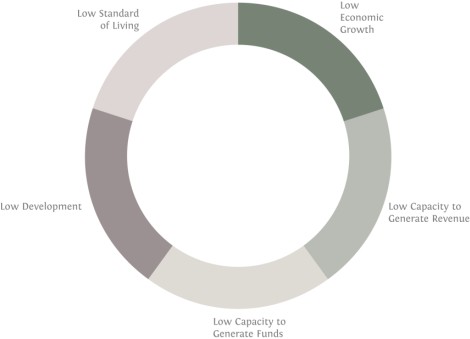Cities have periods of growth and prosperity, followed by decay and destruction which could be due to war or natural disasters, inadequate supply of resources or even due to a river changing its path (for example, Mohenjodaro and Harappa). However, cities can be made resilient through adaptation, as we have seen in the case of London which rose to become one of the major financial and service centres of the world after the decline of its manufacturing/industrial supremacy.
New York, San Francisco, Beijing, Sao Paulo, New Delhi, and Bangalore - these are the financial, educational or silicon capitals of the world. But, none of them really qualify among the most liveable cities in the world.
Take the case of Bangalore, for example. It is intriguing to note that it has emerged as the only city in Karnataka with a million-plus population, thus taking a lead by approximately 10 times over its nearest contenders, Mysore and Hubli-Dharwar. The city remains attractive as it has higher productive efficiency and better amenities when compared to other cities in the state. Yet, it still cannot be counted among the most liveable cities of the nation.
What ails our cities?
Urbanisation patterns over the last two decades show cities sprawling over traditionally agricultural land, thereby distorting the real estate market in addition to swallowing up the peripheral urban areas. This pattern of urban development has led to escalation of property prices in these areas, creating incentives for real estate developers to acquire such land (for example, in Gurgaon in the National Capital Region). In addition, peri-urban areas, the vital links to the rural hinterland, have seen ad-hoc quasi-urban development and are used extensively as dumping grounds for urban waste (such as the rural areas around Chennai).
Another salient feature of the pattern is the migration of rural inhabitants into urban agglomerations due to lack of opportunity in their native areas. One of the major reasons for this migration is lack of adequate economic activities, infrastructure, basic amenities, educational and health systems in the former. The inter-linkages between access to shelter, livelihoods and mobility need to be strengthened in smaller towns and cities. These areas have not been sufficiently developed for addressing economic, social, mobility needs which can counter the push to urban areas. Clearly, urbanization in India has not only been sprawling in terms of land-use but it has also been predatory as far as rural economies are concerned.

Most infrastructure funding policies also favour bigger cities due to the urgent nature of their problems and potential to generate revenue through public and private sector funds. As a result, the low development cycle perpetuates in smaller cities.
The consequences of this migration - inadequate infrastructure facilities, congestion, traffic, accidents, and pollution-related health costs . also stem in equal part from underdeveloped institutions and human resources in urban planning and management. The planning has tended to be ad hoc, isolated, and lacking in integration with other sectors in the spatial context such as land use, utility infrastructure and transportation, thus creating a drag on the urbanization process itself. It will be very difficult to sustain the large metropolitan areas with status quo in urban planning and land use practices. Indeed, if this pattern of urbanization continues, a decent standard of living in major cities will remain unattainable at large.
Another critical factor is that large cities have an in-built screening system, blocking out the unskilled rural poor. Neither is there adequate involvement of the urban poor in the planning process. This furthers the need to focus on the development of small towns and cities, with provisions of employment, affordable housing and efficient public transportation links being the key issues to be addressed.
The evidence of urban hierarchy can also be seen in relation to urban infrastructure funding. For example, the Jawaharlal Nehru Urban Renewal Mission, under its Urban Infrastructure Governance Schemes covers Bangalore and Mysore, while the Urban Infrastructure Development Scheme for Small and Medium Towns (UIDSSMT) cover only 15 per cent of cities having a population of over 20,000 in the state. The budget 2013-2014 for the State has allocated over 90 per cent of the share of funds for urban development to the city of Bangalore. However, in spite of the high level of funding, Bangalore falls far short of being able to maintain itself or be included among the most liveable cities.
Most infrastructure funding policies also favour bigger cities due to the urgent nature of their problems and potential to generate revenue through public and private sector funds. As a result, the low development cycle perpetuates in smaller cities. Redistribution of investment is recommended to develop a strong economic base and increase the 'absorption capacity' of small and medium cities which were neglected so far. This would ensure that migrations are directed towards these cities.

How can we make urban centres liveable?
One option is for all other smaller cities to have similar levels of employment opportunities, amenities and easy access to affordable transport that change the attractiveness of these cities. If this happened, all big cities would likely lose a chunk of the population to the smaller ones, due to the liveability issues that exist in the former. Thus, policies to reduce inequalities among cities could dramatically increase the influx of population from the bigger cities to smaller towns with the result that both gain from this. Every city or town thus has the potential to become a more liveable city than it is.
Saving Cities, Building Towns is such an approach from the Bangalore-based Center for Study of Science, Technology and Policy (CSTEP) to sustain the growth of mega cities. It envisages alternatives to these cities by strengthening the smaller cities or towns that would offer most of the amenities of a megacity but with lesser problems. This would imply increasing the efficiency with which a city is able to produce attractive amenities (like schools, hospitals, public places, cultural activities, etc.) and minimum friction (less congestion, lower taxes, etc.).
The concerns around liveability in the bigger cities can be addressed by policies of integrated spatial planning to develop adequate infrastructure, build amenities, education and health systems both in the cities and rural areas and smaller towns. In general, alleviating high urban concentration would require investments in inter-regional transport, in telecommunications to facilitate deflection of economic activities from the mega cities, and in fiscal decentralization, so that smaller cities can also access fiscal resources and provide the services needed to compete with mega cities for industry and population
Effective growth management policies of cities may again reduce investment requirements significantly, due to less network costs in transport, water, electricity, sewage etc. The urban aspirations (higher standards of living) of the smaller towns and rural areas need to be understood and reflected in policy and planning.
Thinking at the regional scale is also important. This would entail the creation of interconnected clusters (mixed use development), by improving last mile connectivity to transit points (road and highway for both passenger and freight) along with upgrades of existing infrastructure, basic amenities and also ensuring timely land availability for development of these infrastructure.
In an overall analysis, therefore, there is an urgent need for integration, revitalization and renewal of smaller towns and cities to make urbanization in India sustainable. Some of the critical recommendations to bring about the same would be:
-
Creation of Multipolis: There is a need to think of creating a 'multipolis', where a spatial planning strategy can make co-existence of small and large cities possible, in a relatively small area characterized by self-containment and good connectivity within the area, as one can see in the Rhine Ruhr area/Randstad, Holland.
-
Redistribution of investment: This should be directed towards development of a strong economic base for small and medium cities neglected to date. A connected region, encompassing cities and towns of different sizes and the rural economy, provides more sustainable and favourable regional development and urban form. Strategies may include enabling more manufacturing industries in these cities, extending the production chain, creating agro-based value added industries, along with development of relevant skill base through better education and vocational training.
-
Holistic approach: Long term comprehensive development planning must have a holistic approach that includes urban regions and a comprehensive urban sector perspective rather than intervention in individual sectors. Physical as well as social infrastructure and economic opportunities as a complete package is important for small cities to emerge as centres of distributed development. A re-look at the design of the different development schemes and institutional coordination may also be necessary to initiate a shift from the top-heavy urbanization investment strategies

